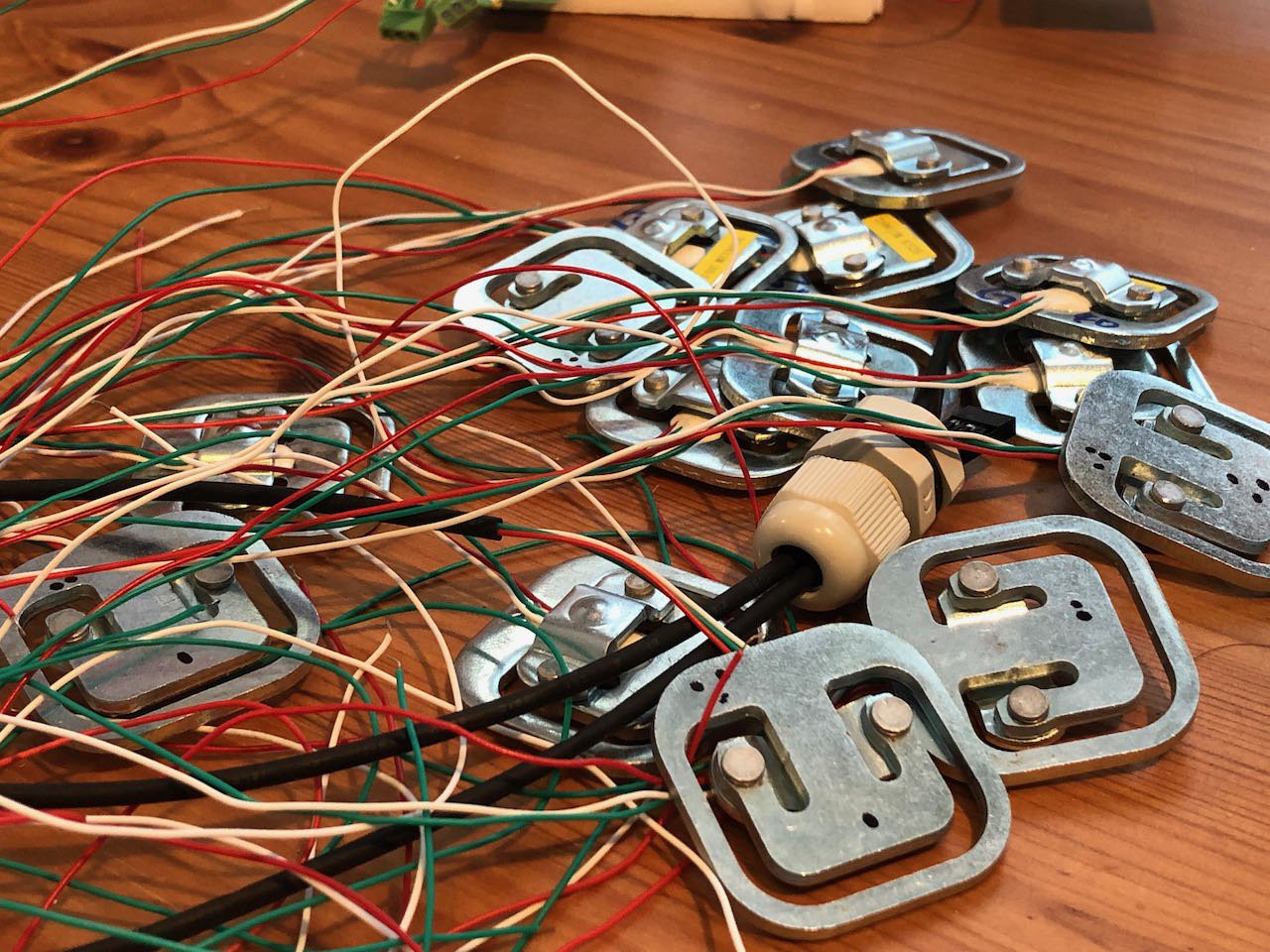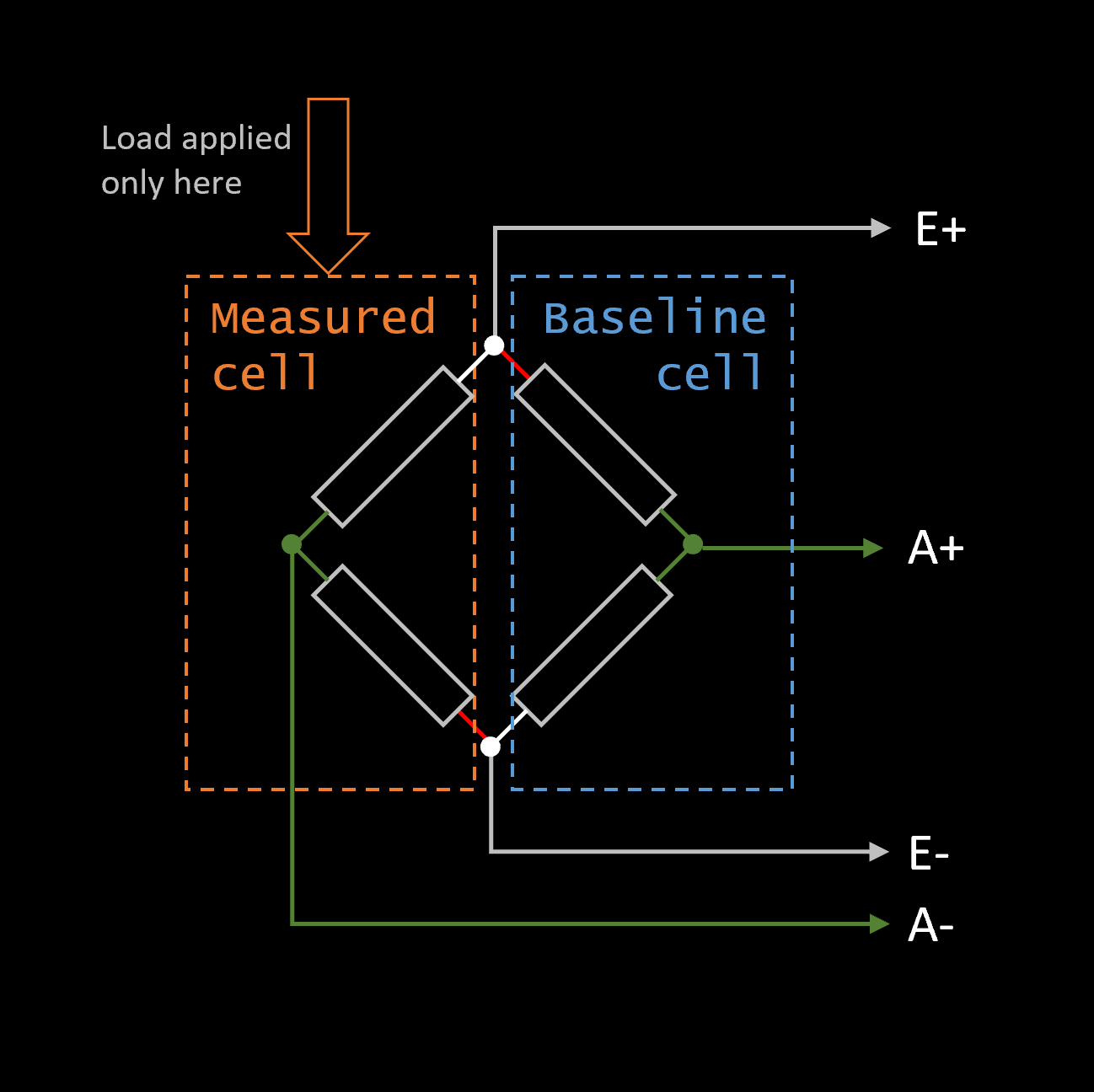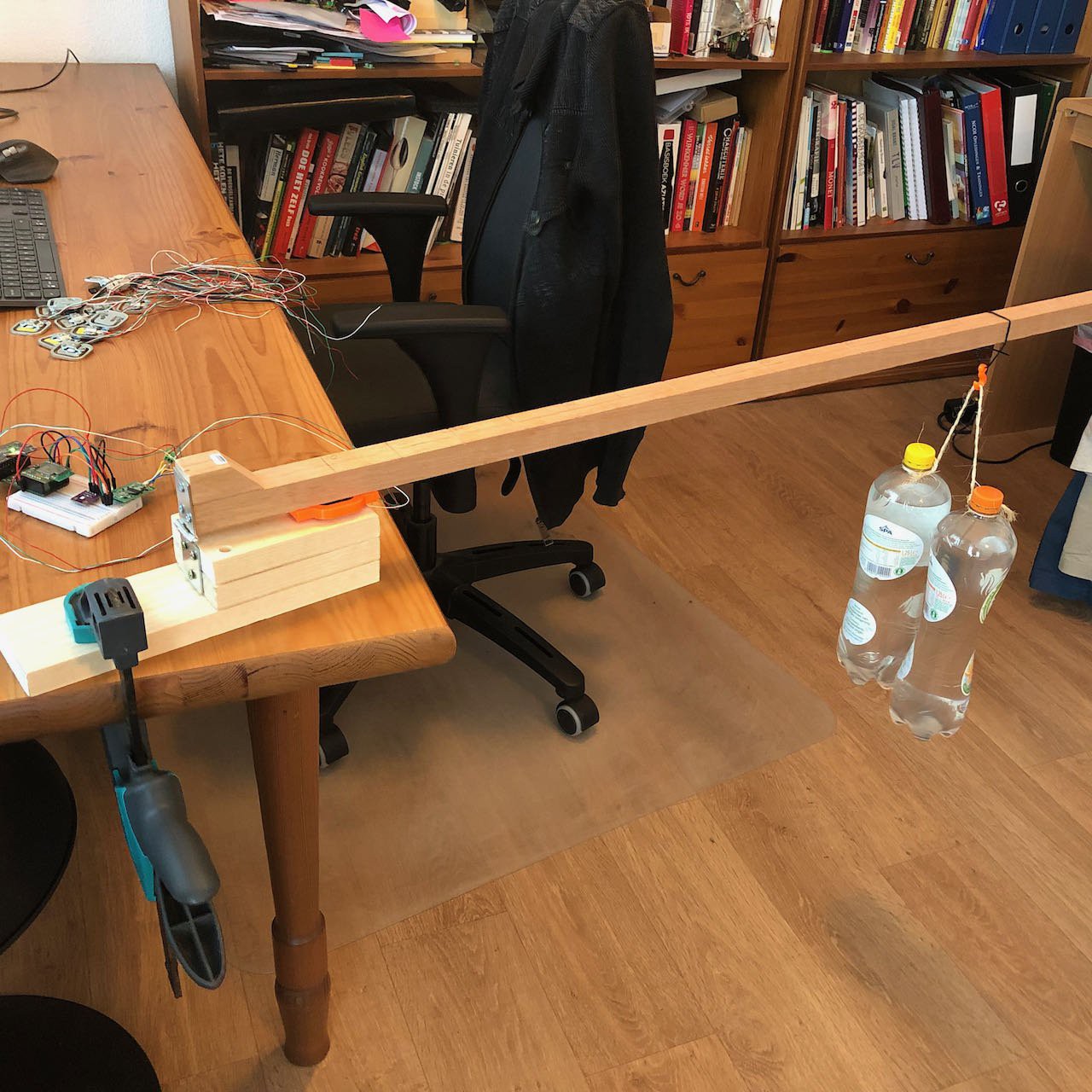-
How I measured load cells
11/25/2021 at 16:38 • 0 comments![]()
These cells have only 2 strain resistors in them, so 2 additional resistors are needed to take the measurements. I’ve tried to use resistors, but they produce too much noise. Easiest solution was to use another cell. In this way it compensates also for temperature changes:
![]()
Test bench is made in such a way that it is easy to apply a variable load. I’ve took 1m long 27x22 mm hardwood bar. It is attached to the base with a door hinge. I’ve measured carefully 10cm from the turning axis – this is where I’ve placed the “DUT” – measured cell. It’s tipping point is exactly at 10 cm distance from the axis. I’ve made marks on the bar at each 10cm: 20, 30, 40 etc, up to 100cm. To improve repeatability, I’ve also made small carvings with a sharp knife.
Control weight is made from 2 plastic bottles filled with water. Their total weight is 2,5kg. Applied at 100cm distance it gives 10:1 leverage, so effectively I apply 25kg load to measured cell. Plus the weight of the bar itself. Here I’ve approximated a bit: I just weighed the bar itself and assumed that the centre of mass will be exactly at 50cm. This give me correction load of 1,7kg on the cell when the bar is lowered.
This is how it looks when I am taking measurements:
![]()
What I’ve measured
Hysteresis
Load is applied first from 0 to 26,7kg and then from 26,7kg to 0. No significant difference was measured. Good!
Linearity
Load is applied in steps 0; 1,7kg; 6,7kg .. 26,7kg. Linear regression analysis shows very good linearity, no measurable deviation or correction is needed. Good!
Sensitivity
Different cells are put into the test bench and then raw output is measured at 0 and maximum load. Simple linear regression is taken as approximation of the cell sensitivity.
Each cell has own zero point – not a problem
Sensitivity is deviated in some cases significantly. Not so good. Some cell sets have very similar sensitivity, like 186, 188, 184,181 raw units/kg. Others like 191, 197, 171, 194 raw units/kg.
Sensitivity similarity between the cells seems to be a matter of luck.
Creep
Load was put on one cell for 3 weeks in the environment with variable temperature. Temperature changes were several degrees Celsius. No correlation between temperature and measured weight fluctuation observed. Daily oscillations were about 4 raw units (ca 24g).
Measured output decreased in 3 weeks from 6442 to 6436. This makes ca 35g difference. It is still usable for weighing beehives.
Temperature stability
To be done yet.
Testing out 50kg load cells
Are they good? What are their limitations? What is the best way to use them?
 Alexander Dvorkovyy
Alexander Dvorkovyy

